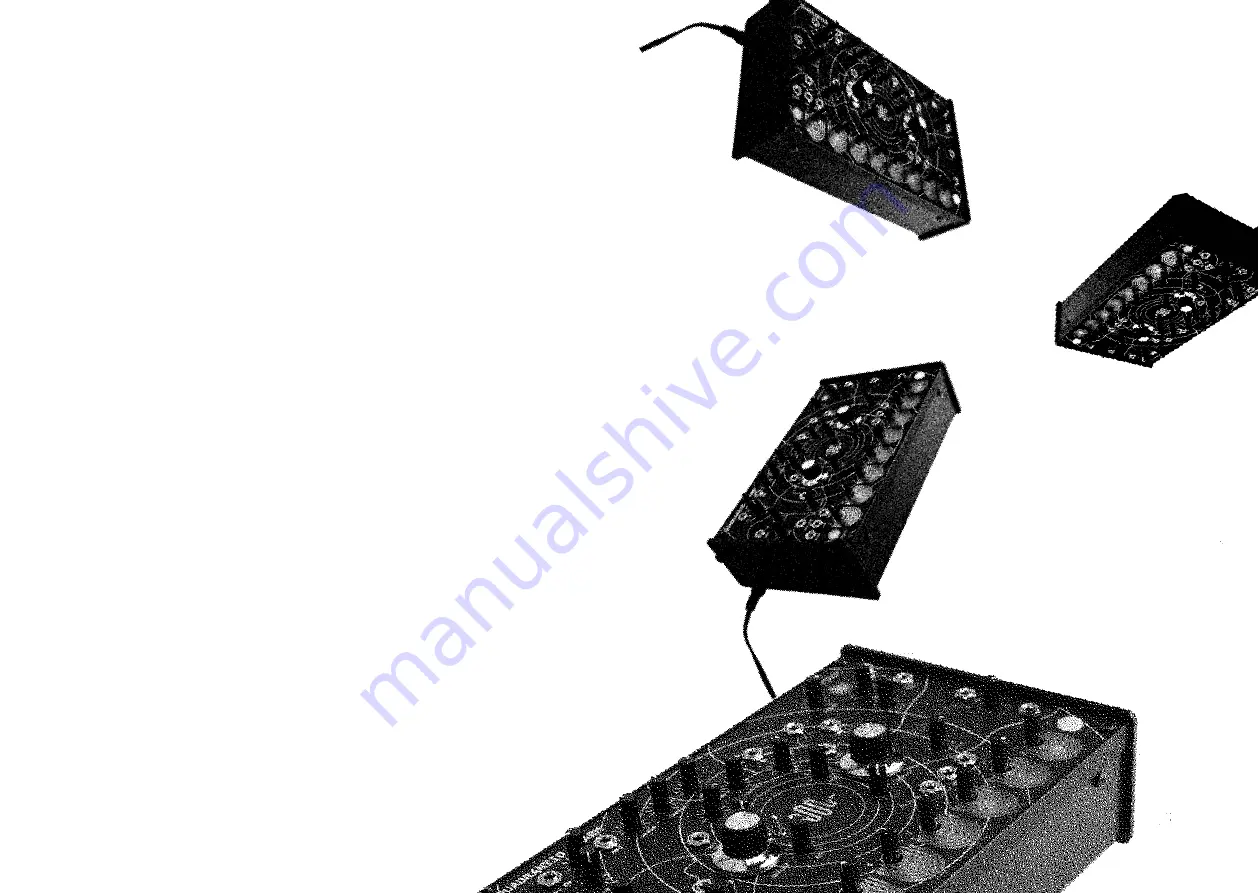
QUADRANTID SWARM
6
7
User manual
LFO
The LFO section is pre-patched to cutoff pole 2 and features seven selectable waveforms :
triangle , sine, ramp down , ramp up , and 3 different random modes. the 8th selection which is the sequencer
CV out (allowing the sequencer to be patched to other compatible devices). Speed is set using the ‘speed’
knob. An additional square output has been included which can be useful for triggering clock resets.
The square pulse widht is determinated by the LFO waveform, the random mode won’t give you
a perfect square.A slew limiter (with CV signal in and out) enable you to round the waveforms
coming from the LFO. By defaut the main LFO output is connected to the slew in.
Polyphonic Mode
By holding shift and pressing the start button you can switch for monophonic
mode to polyphonic mode.In polyphonic mode the spread mode will have no function.
Each of the 8 VCOs is controlled by the 8 touch keys. The individual frequency
of each vco is controlled by the potentiometers above each key.
Each VCO has his onw VCA controlled by the touch key.
Sequencer
The internal sequencer offers you 8 steps.
On each step you can control the CV and the gate.
To active a gate, simply press on the touch keyboard.
To change the pitch use the individual potentiometers on each step.
The CV is internally connected to the VCO’s frequency. And the gate output to
the gate of the envelope. It is not possible to control an external sound source from the internal sequencer
except by using the 8’s preset on the LFO. In this mode you will have the sequencer output with a 0-5v
range. It’s speed is controlled by the LFO and not the Sequencer’s clock. The sequencer clock has
its individual output. To sync the sequencer to an external clock , use the clock input.
A trigger signal at the reset input reset the sequence to step 1.
The start button enables you to start and stop the sequence.
Noise
A noise output gives you an additional modulation source
MIDI implementation
by default the QS responds to MIDI channel 1.
to change the MIDI channel simply press SHIFT while powering up the unit.
Send a note on the new midi channel. And press START to validate your choice.
The new MIDI channel will be stored in the internal memory. By pressing the 8th key (noise)
you can also activate the external MIDI clock. It will be available at the clock output.
The QS response also to MIDI CC for a couple of parameters CC1 to CC6 will add some
modulations to lfo Speed, spread, fold, perc, attack and decay.
The Ccs are added to the current potentiometer value.



















